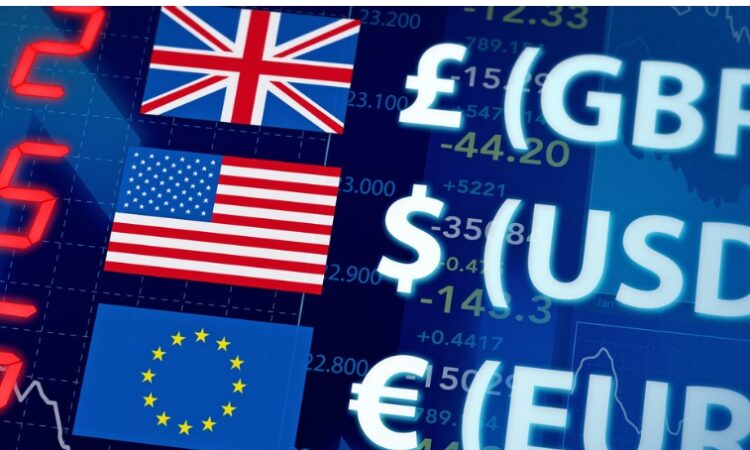
Foreign exchange (FX) can be viewed as a barometer of a nation’s economic health, when compared to the economies of other nations. By understanding and interpreting how currencies move, investors can access a range of opportunities, including to enhance offshore investments or seek returns from pure FX plays.
What moves the barometer’s needle?
Currencies are affected by numerous factors, including geopolitical events, trade data and central banks’ monetary policy.
Countries with high employment and wage growth likely have strong consumer spending. When populations spend it boosts local company profits, encourages businesses to spend for growth, and increases government revenue from taxes. It all adds up to strong economic growth.
Investors, both individuals and institutions, and even other governments notice that prosperity and look for options to invest. This activity pushes the currency of that country higher. A higher interest rate also appeals to offshore investors who buy into and invest in the local currency, further increasing demand. Of course, the currency will weaken if unemployment is rising, government revenue falling, and investors are shifting funds to other countries.
When central banks are in the process of adjusting monetary policy it creates volatility, and this volatility can create opportunities for investors to take advantage of the uncertainty that monetary policy adjustment creates.
Australia also benefits from being one of the few countries in the world with the highest AAA credit rating. The ratings are determined by global credit agencies like Moody’s and Standard & Poor, and it gives an indication of the risk associated with buying a nation’s sovereign debt, better known as government bonds.
Safe haven currencies
Even though the United States of America does not have as high a credit rating as Australia, it has other advantages that make the US dollar appealing. The US dollar is both the currency of choice for international trade and a safe-haven currency. The latter means there is confidence the nation’s treasury will continue to honour government debt even in times of economic instability. Other safe haven currencies include the Swiss Franc, Euro and Japanese Yen.
Commodity currencies
The currencies of most western countries are ‘floated’, with the value of the currency set by the market and reflecting the economic and trade position of the country. Despite Australia’s relatively small economy, the Australian dollar is one of the world’s most frequently traded currencies. This reflects Australia’s importance as a raw materials exporter, which underpins the value of the currency.
Australia is known as a commodity currency due to its dependence on the export of minerals, gas, agriculture and bulk commodities like iron ore, bauxite and coal. Other commodity currencies include New Zealand and Canada.
It has a real impact on the movement of our dollar, and its why during the Chinese-demand fueled commodities boom between 2003 to 2011 the Australian dollar rose strongly against the US dollar. For a time, it was even worth more than the US dollar.
Interest rates matter
A country with interest rates higher than its peers will attract investment funds, particularly into its bond market. This inflow of funds can help support a currency.
When interest rates started to rise globally in early 2022, Australia moved from a position of having a higher central bank cash rate compared to the US central bank to a lower cash rate by the end of that year. It resulted in investment funds flowing from Australia and many other markets to the US. This put downward pressure on the Australian dollar and upward pressure on the USD.
Currencies move not just because of what’s happening within a local economy but also how that economy fits into the regional and global picture. When considering how a currency may move it’s important to take an international perspective.
Common impacts on the Australian dollar
- Commodity prices
- Economic Outlook
- Performance of US dollar
Perception is everything
How investors perceive a country is also an important driver for its currency.
Australians likely think of our country as having an active and vibrant tourism industry, and it does. But international investors do not perceive it as a prime driver of the economy, so impacts like COVID-19 on tourism did not have a major impact on the dollar.
On the other hand, the economy of Thailand is heavily dependent on tourism, and as the virus spread in 2020-21 its currency (Thailand baht) weakened.
You don’t need to be an economist to look for the big drivers that may be impacting a currency, some simple research should be sufficient. Our investment specialists are always on hand to answer any questions that may arise from your research.
Armed with this knowledge, you can make more informed decisions about managing currencies, determine when it’s time to get professional advice for more significant decisions like an offshore or foreign currency investment, or when to purchase another currency in preparation for future travel plans.
Important Information
The information contained in this article is gathered from multiple sources believed to be reliable as of the end of September 2023 and is intended to be of a general nature only. It has been prepared without taking into account any person’s objectives, financial situation or needs. Before acting on this information, we recommend that you consider whether it is appropriate for your circumstances and that you seek independent legal, financial and taxation advice before acting on any of this information. ©2023 NAB Private Wealth is a division of National Australia Bank Limited ABN 12 004 044 937 AFSL and Australian Credit Licence 230686.



